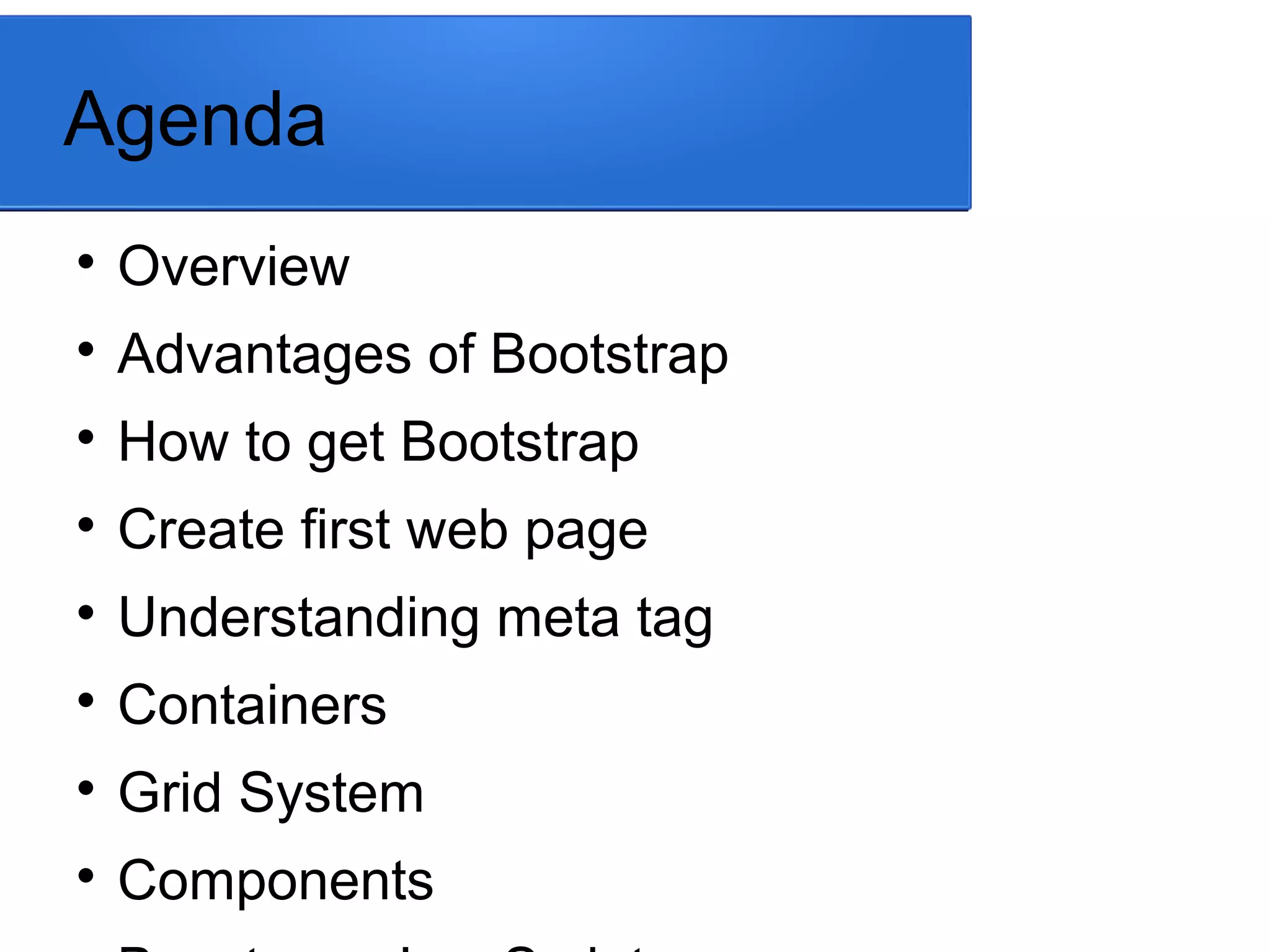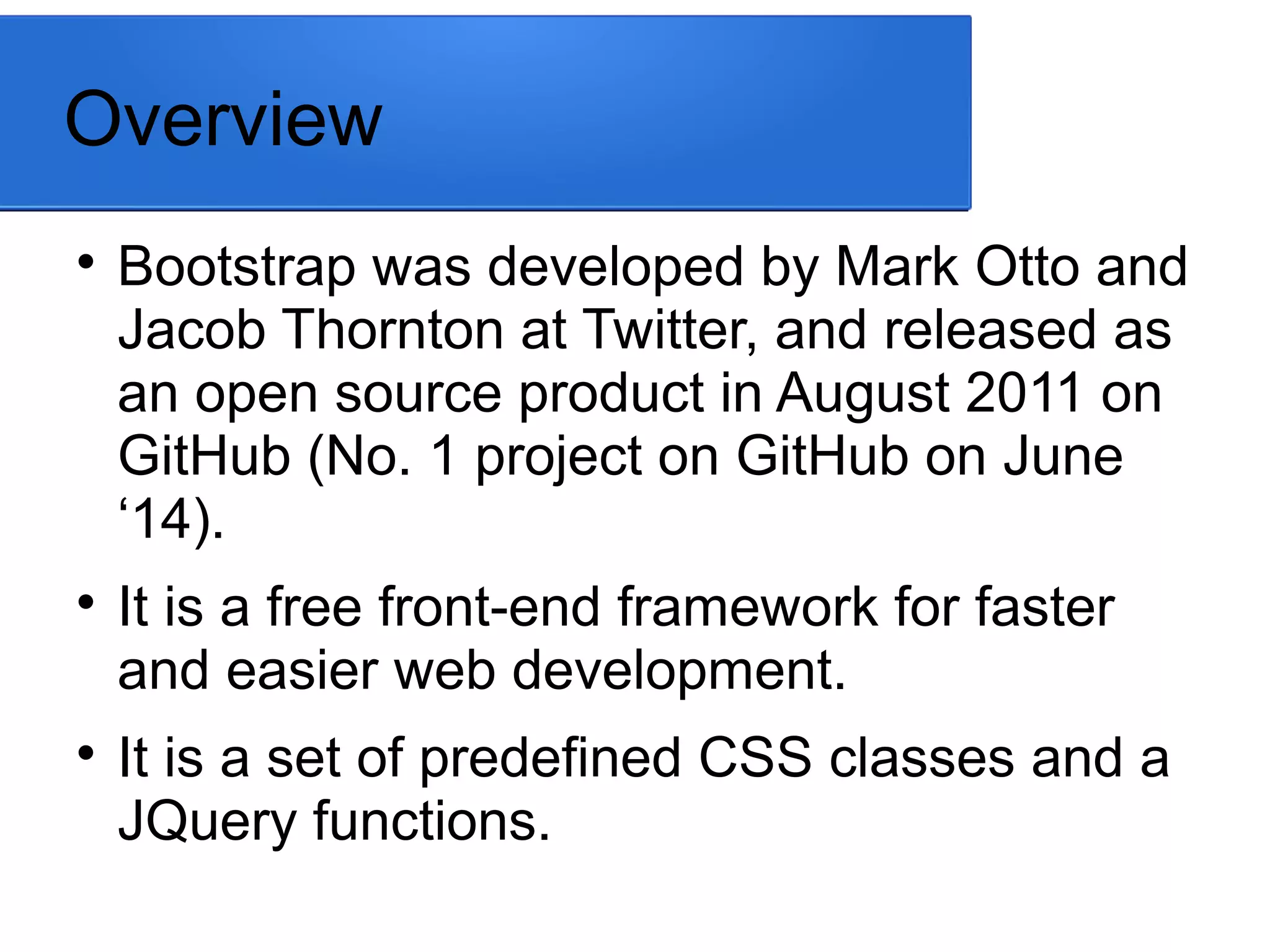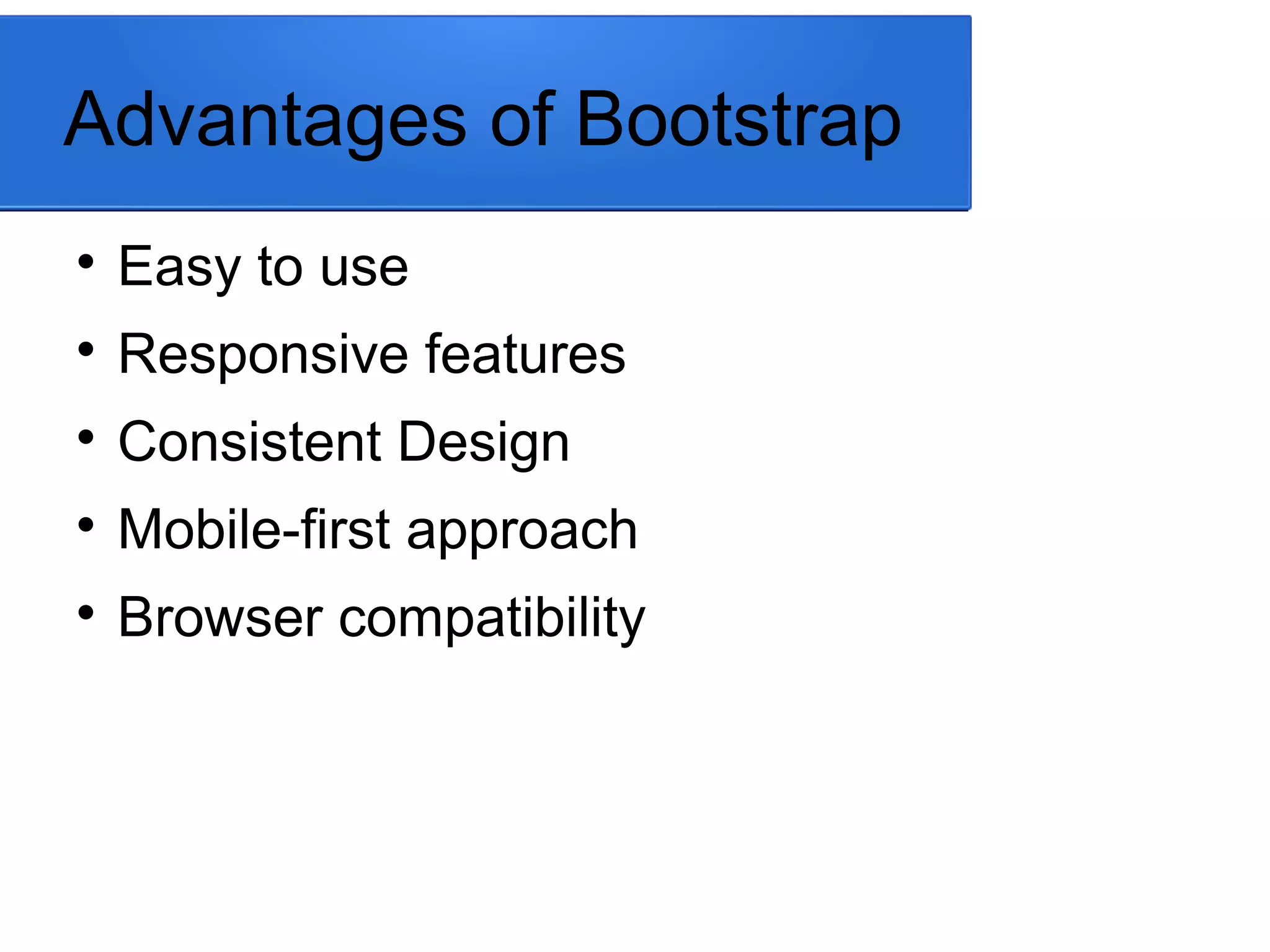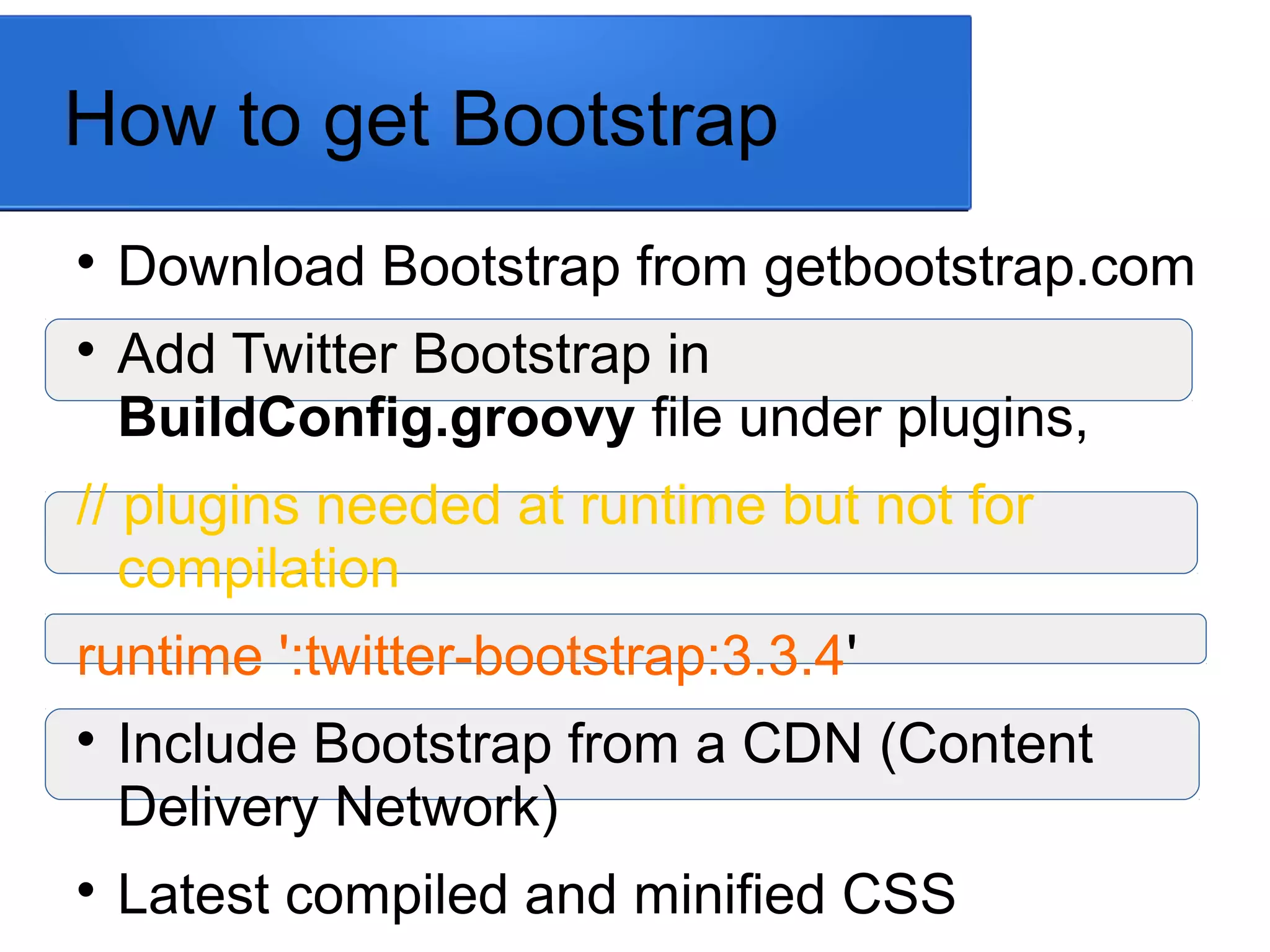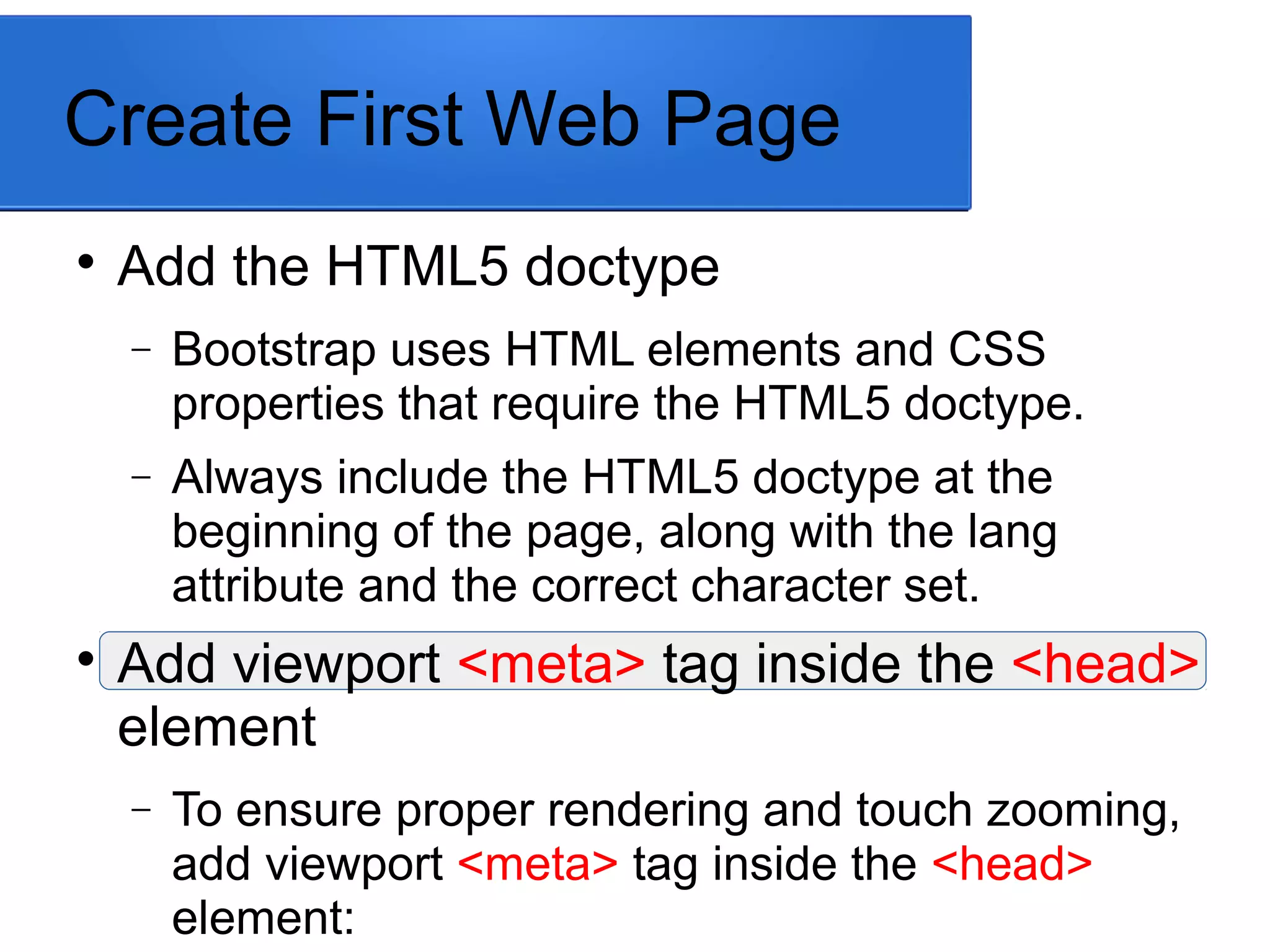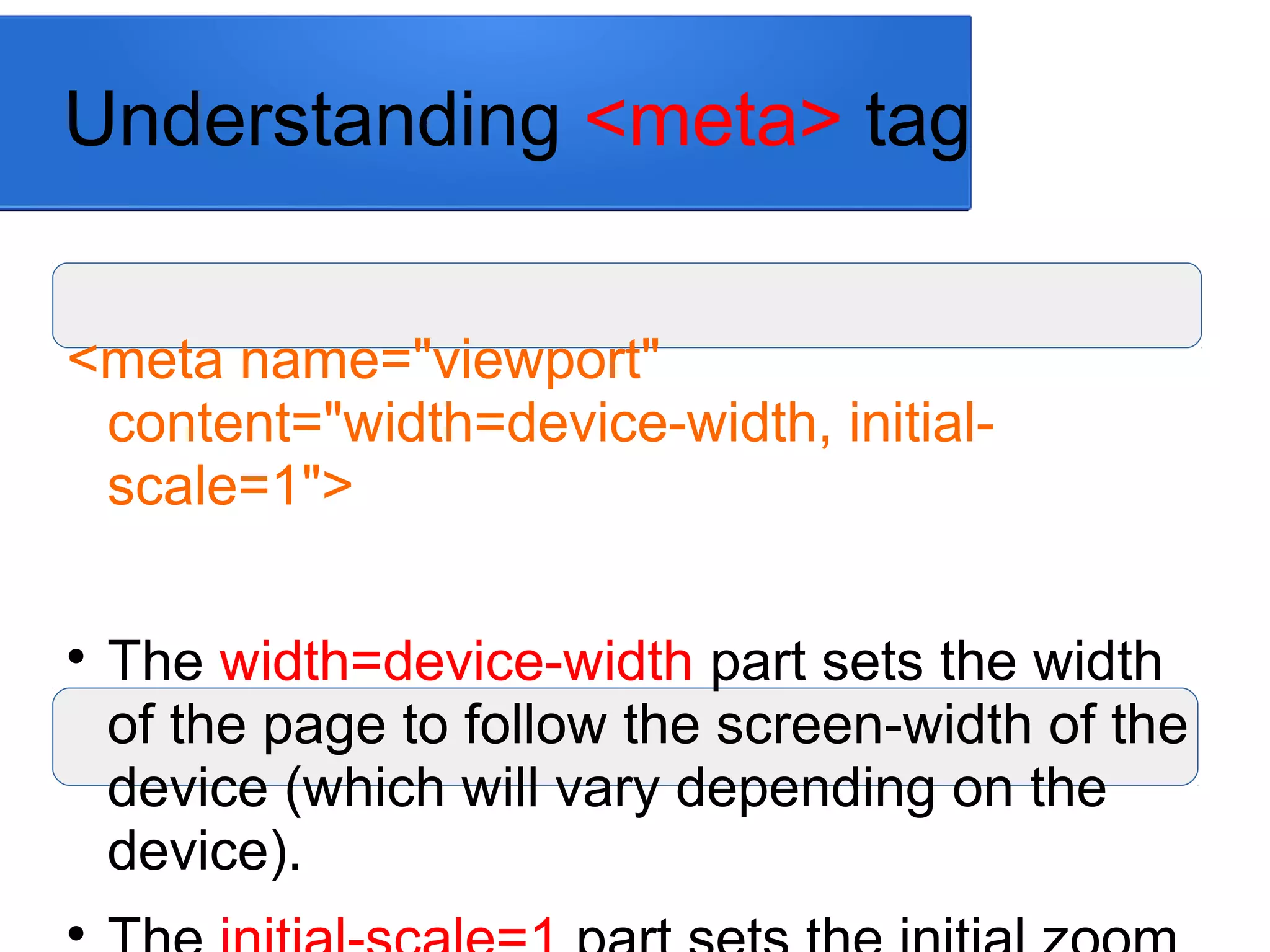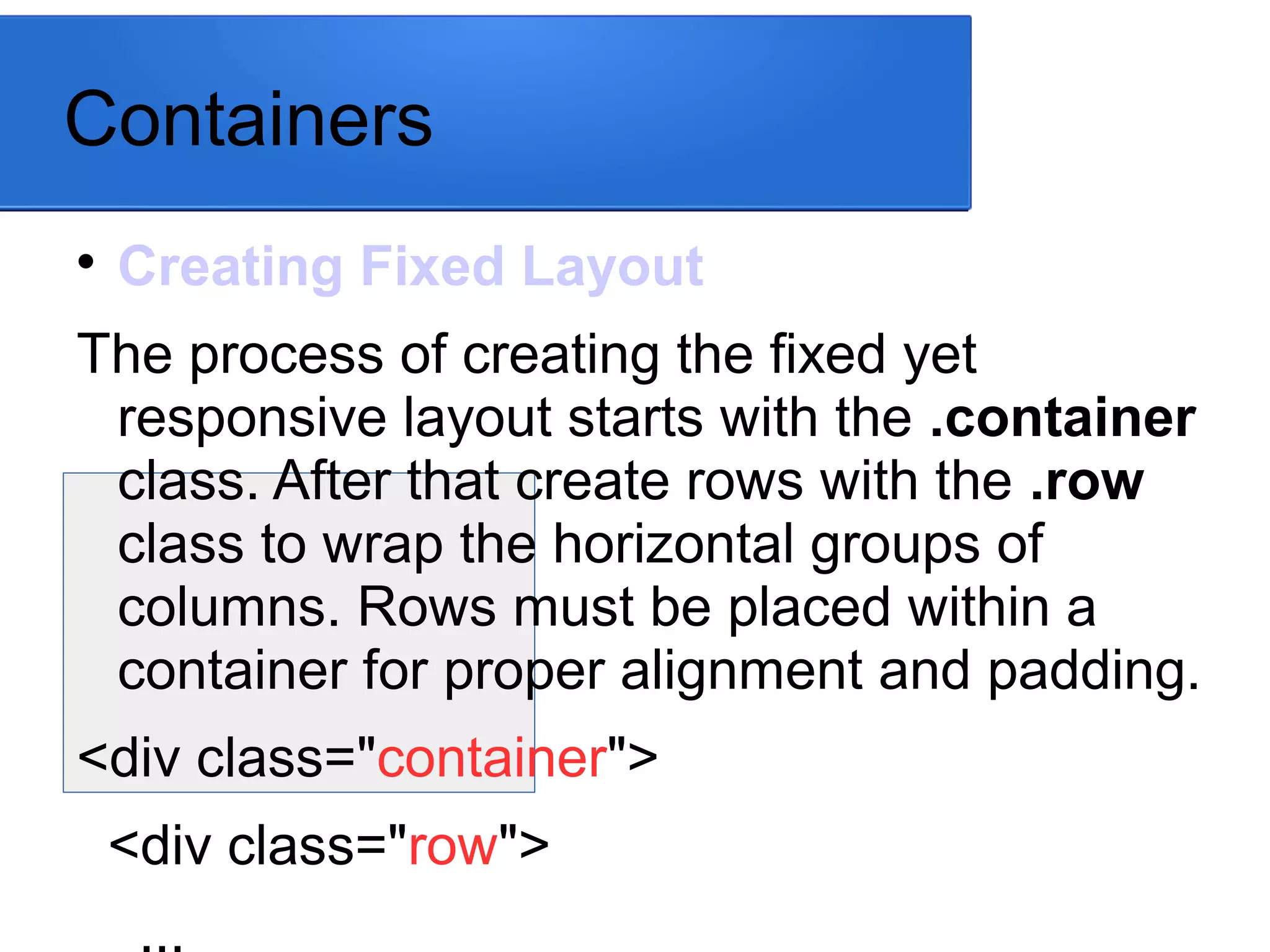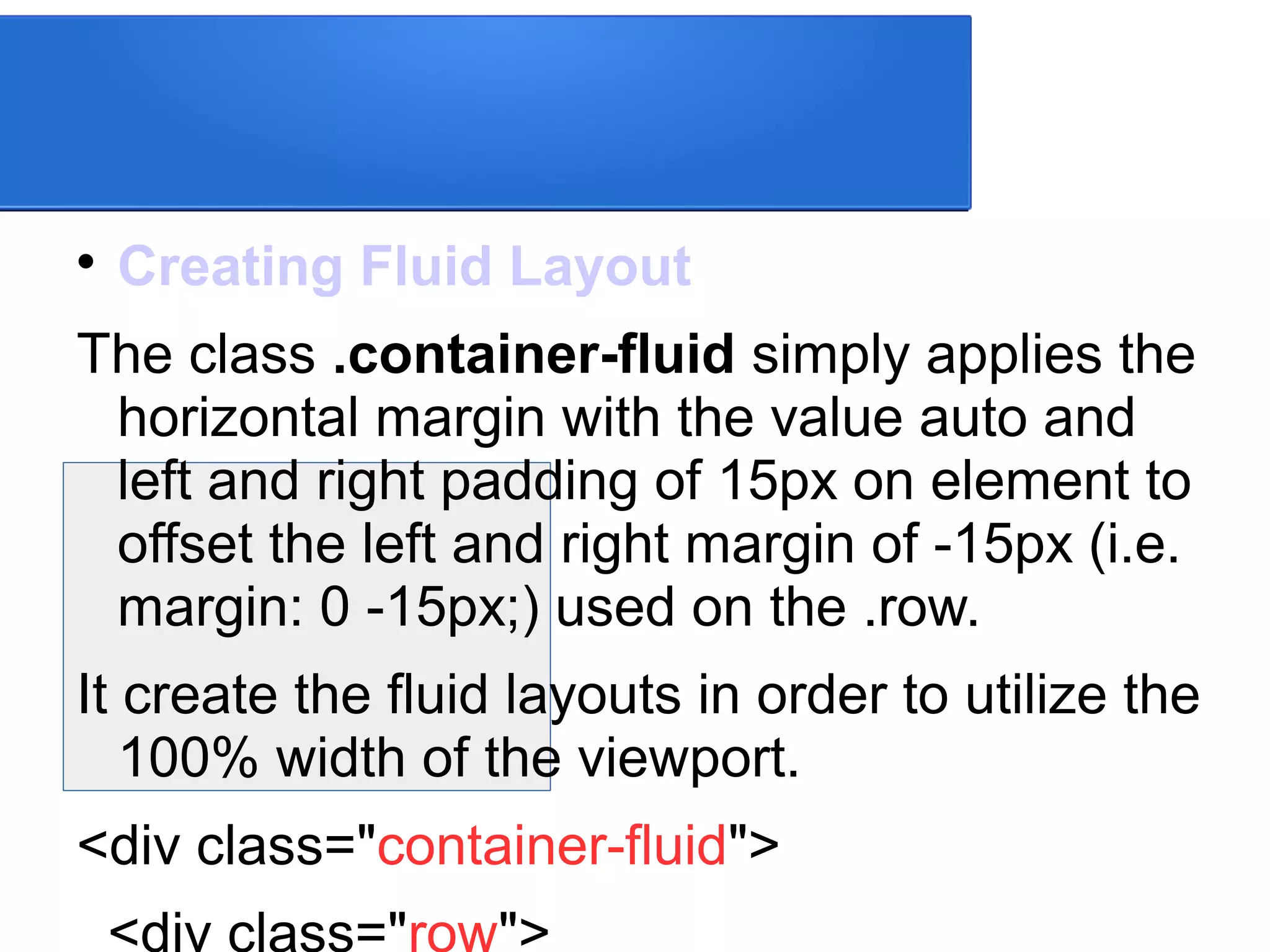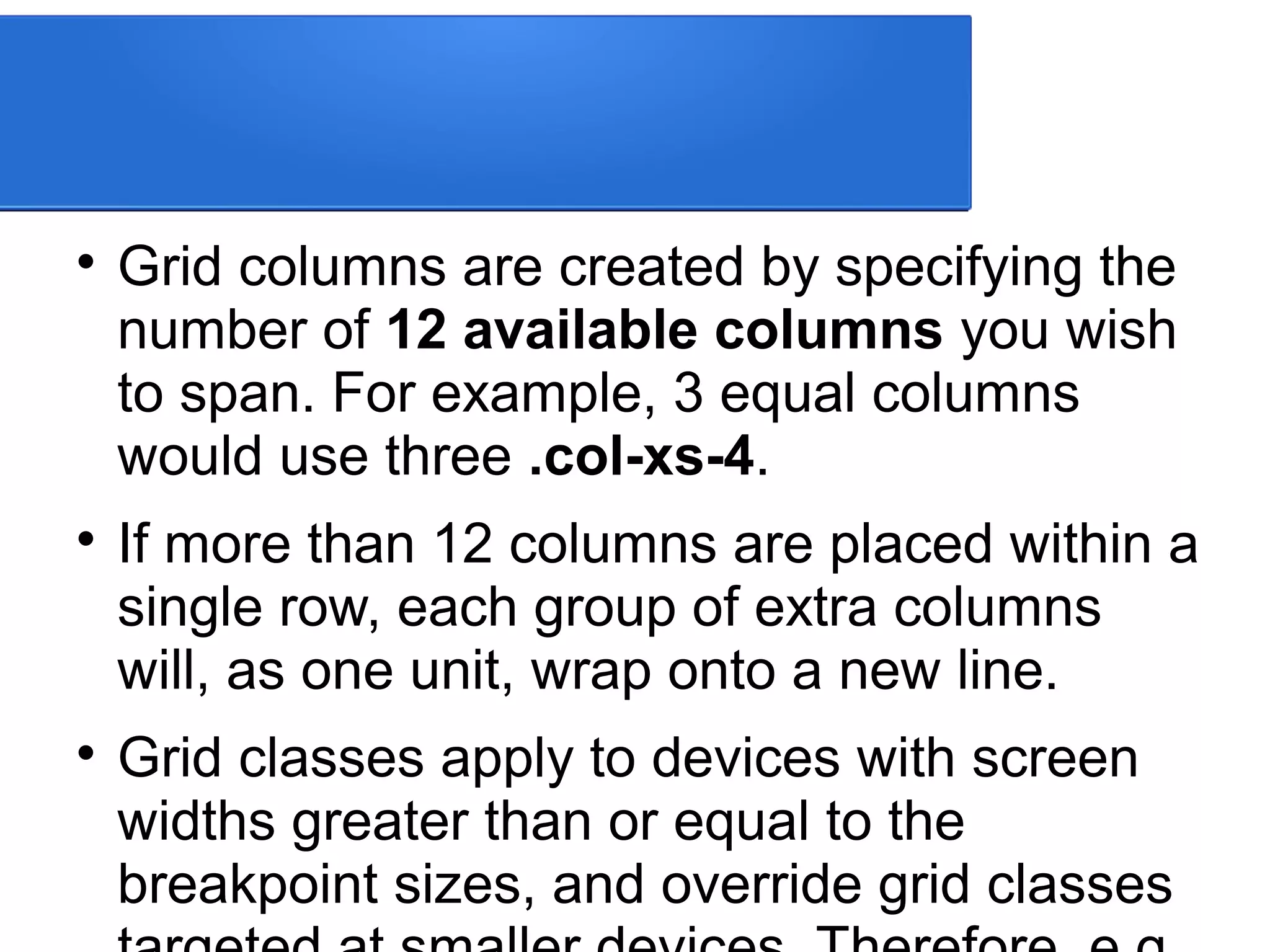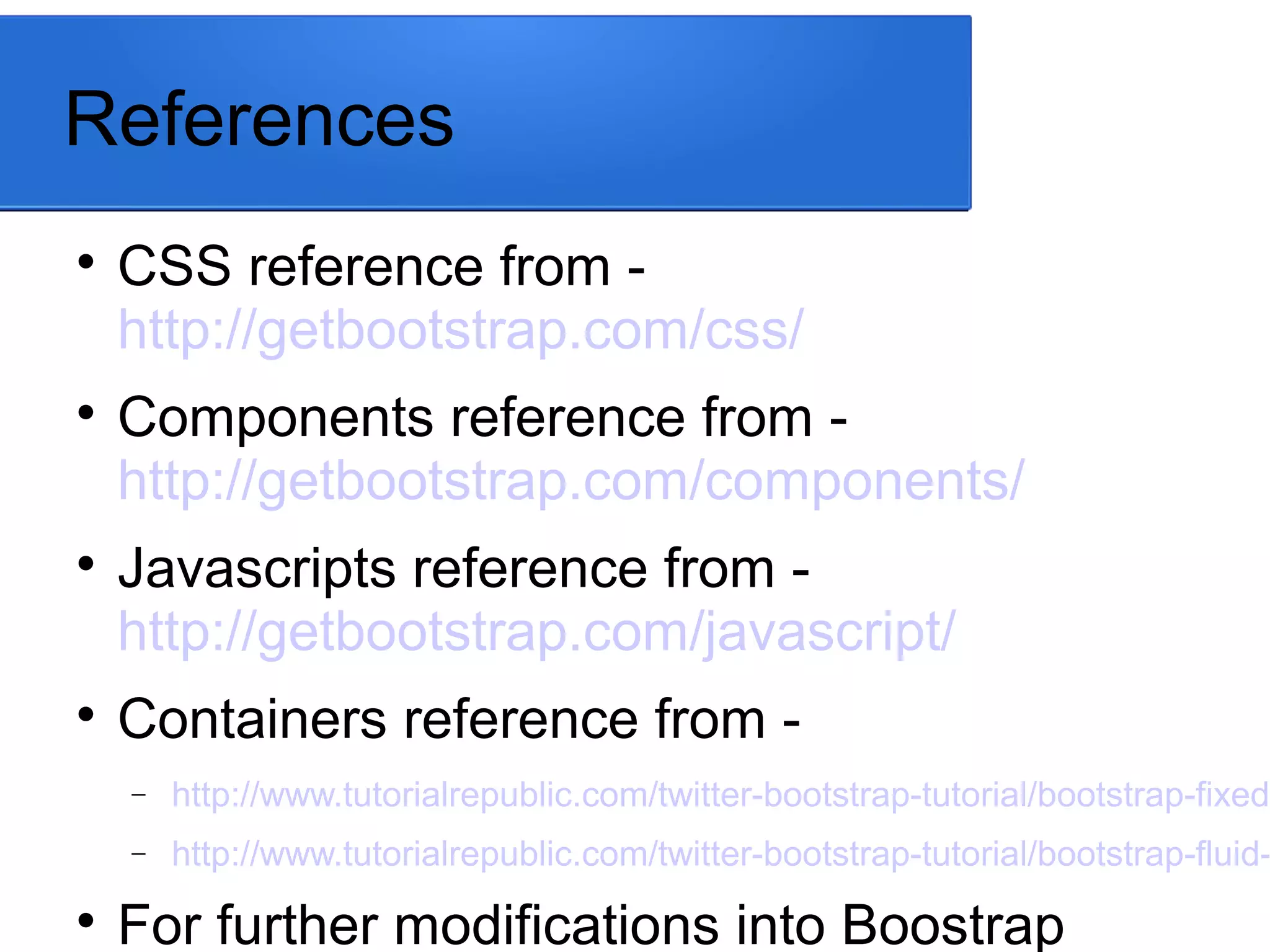The document provides an overview of Twitter Bootstrap, an open source front-end framework for building responsive, mobile-first websites. It discusses Bootstrap's advantages like being easy to use, responsive design, and consistent styling. It also covers how to get Bootstrap, create basic pages, use the grid system and components, and includes Bootstrap's JavaScript plugins. The presentation includes links to external references for further information on Bootstrap's CSS, components, JavaScript and other topics.

